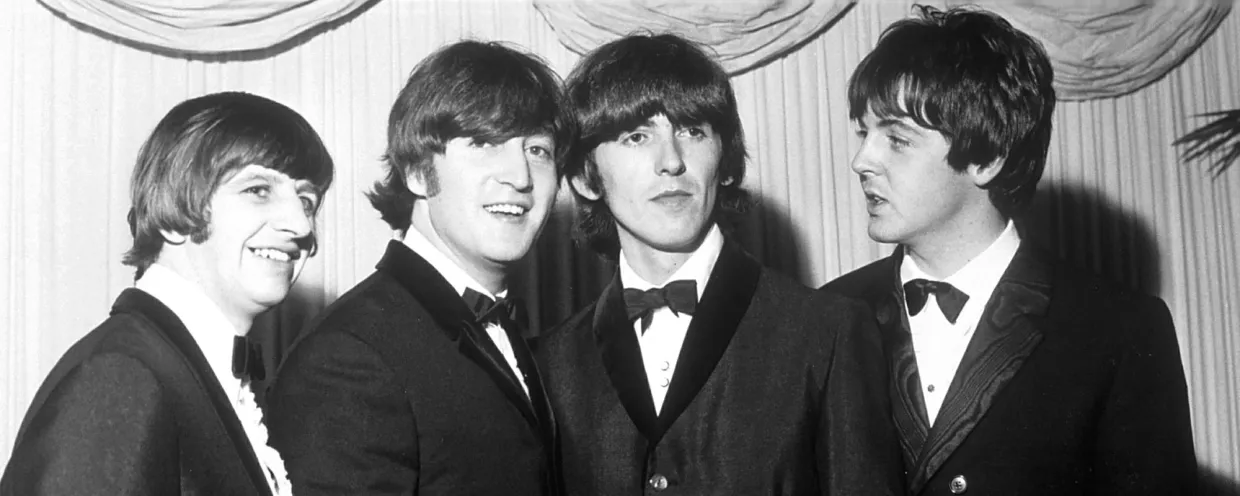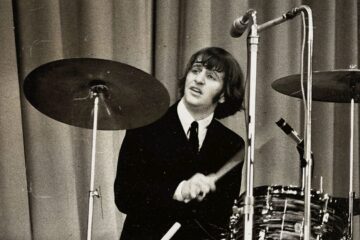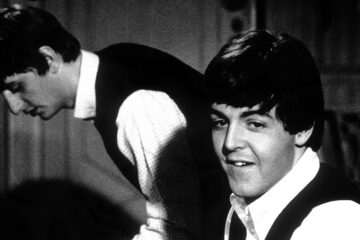There was as a boom in British pop and rock music in the 1990s, with bands like Oasis, Blur, and Pulp grabbing headlines and competing for listeners. But in 1995 and 1996, you could make the argument that, because of their Anthology project, no British band was any bigger than that scrappy quartet from Liverpool, The Beatles.
With a multimedia assault taking aim at music, television, and even the book world, the band was everywhere once again at that time. And they did it all by looking deep into their pasts.
The “Threetles” Make Their Plans
Because The Beatles so dominated the music world during their time together, the four men in the band often struggled to live with that legacy as they tried to make their way forward in their careers and lives in the years after the breakup. By most accounts, relations between the ex-Beatles were starting to thaw a bit right before John Lennon’s death, an event that obviously ended any reunion hype that night have been building.
Those relations chilled again between the three remaining members in the ’80s. (Paul McCartney famously didn’t show up at the group’s induction into the Rock & Roll Hall of Fame because of legal squabbles within the band.) But in 1989, the three men started having meetings, along with Yoko Ono as representative of the Lennon estate, to go back and celebrate the band’s time together.
An authorized documentary about the group had long been discussed. (Neil Aspinall, the band’s longtime associate, had allegedly assembled a documentary entitled The Long and Winding Road just a year after the breakup, but it was never released.) It was decided that a television doc would be the tip of the marketing spear that led fans into three double-CD’s worth of unreleased Beatles’ music.
What changed their minds about looking back? Well, financial concerns certainly played a part, as the windfall from the project would be substantial. There’s also a story that’s been told that George Harrison played unreleased Beatles material for Tom Petty not long after they met. Petty was so wowed by what he heard that Harrison, who had always been the most skeptical about rehashing The Beatles, began to see the logic in releasing that stuff to the world.
The Anthology Music
The bulk of the Anthology music came from the cutting-room floor of The Beatles’ original sessions: early auditions, unused takes, songs that had been left off actual albums or had been covered by others. That was supplemented with live material from early in the band’s history. Most of this material had never even made it to bootlegs, so it was revelatory when it was released.
To supplement all this, the three remaining Beatles got together with producer Jeff Lynne to record three songs that had begun as demos by John Lennon. Two of those songs, “Free as a Bird” and “Real Love,” were shown on the documentary and were placed at the start of the Anthology 1 and Anthology 2 collections, respectively. (Harrison bailed on recording a third Lennon song called “Now and Then” because he didn’t think the quality was up to the group’s standard, although McCartney and Starr would eventually complete it in 2023.)
The Anthology Documentary
One thing the three men agreed on from the start was the documentary would be their story, meaning there wouldn’t be any talking heads or narrators involved who weren’t directly involved with the group. McCartney, Harrison, Ringo Starr, producer George Martin, and Aspinall all recorded interviews done by noted TV host and musician Jools Holland. Archival interviews with Lennon were used to represent his side of the story.
Harrison battled documentary director Bob Smeaton somewhat when the latter wanted to focus on some of the rougher times in the band’s history together (such as his infamous dustup with McCartney during the making of the Let It Be movie.) But overall, the documentary delivered a loving, if somewhat whitewashed portrait of the band, and was a ratings smash both in England and America.
The Anthology Legacy
If nothing else, the Anthology seemed to convince The Beatles and the folks at Apple that there was a thriving demand for new product from the band, even if that new product was repurposed from the old days. It’s hard to imagine things like the Live at the BBC albums, Ron Howard’s Eight Days a Week and Peter Jackson’s Get Back documentaries, or even the Vegas Cirque De Soleil show Love, taking place without it as a springboard.
Now all that’s left for all involved is to make the documentary available for streaming. That would allow another generation of fans to take a deep dive into Beatles history, as told by the men who were smack-dab in the middle of it.



